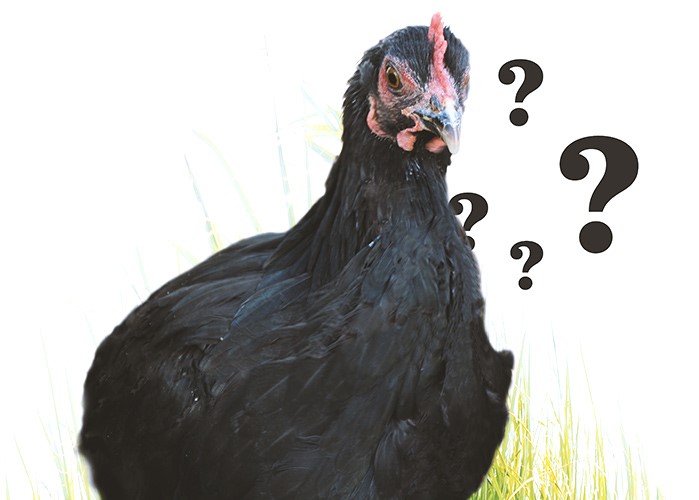You can tell by the taste if the pig lived a good life.

You can tell by the taste if the pig lived a good life.
It is difficult, if not impossible, to taste, smell or see the quality of the animal’s life in the quality of a product made from it. Quality defects in meat may reveal that the animal was not feeling well at some point in its life, but consumers rarely see such defects on their plate.
Happy cows produce more milk.

Happy cows produce more milk.
A high milk yield does not automatically mean that the cow is feeling good. Cows have been bred to produce large volumes of milk, pigs to produce lots of piglets and to grow fast. Modern production animals are raised to produce efficiently, sometimes at the cost of their own wellbeing. On the other hand, an animal that produces little is not necessarily unhappy.
Organic chickens have a better life.

Organic chickens have a better life.
True in that organic chickens – like other organic farm animals – live in better conditions than conventionally raised production animals. Organic animals are required to have more space, a more varied diet and opportunities to go outdoors. These, however, are merely necessary conditions of animal welfare: they do not automatically guarantee a better life.
Health and welfare are not the same thing.

Health and welfare are not the same thing.
Health is a necessary part of animal welfare, but welfare is more than just health. It also includes enabling the animal to fulfil its natural behavioural needs and to experience positive sensations. Welfare also calls for a propitious environment, drinking water and appropriate food, and good care and treatment.
Dogs feel guilt.

Dogs feel guilt.
According to researchers, this is mostly a myth. Dogs are quick to react to their owners’ behaviour and to try to appease their anger when they arrive home and find the sofa cushions chewed to bits. Studies indicate that dogs are unable to associate the damaged sofa with the owners’ angry behaviour; they only react to the anger.
Happy cats roam free and catch mice.

Happy cats roam free and catch mice.
Free-roaming cats are exposed to many dangers and pose a threat to wildlife. Indoor cats also like to hunt, but just playing at hunting will fulfil a cat’s behavioural needs.
Free-run hens never go outside.

Free-run hens never go outside.
Free-run hens are allowed to move freely inside the barn. They are not free-ranging, however, as they are not normally allowed outdoors. Yet their eggs are sold in Finland as “free eggs” (they are actually “cage-free”). If you want to eat eggs laid by hens that spend time outdoors, choose free-range or organic eggs.
Hens in enriched cages have lots of space.

Hens in enriched cages have lots of space.
An enriched cage has slightly more space than an A4 sheet of paper per hen. One cage houses between 10 and 60 hens. This is the most common egg production system in Finland. Cages are placed in several levels of rows. This is the cheapest way to produce eggs.
A school of rainbow trout contains both female and male fish.

A school of rainbow trout contains both female and male fish.
Rainbow trout raised for food consists entirely of female fish. Female fish are preferred for food production, since they reach sexual maturity later than males, and they do not behave aggressively towards each other. Sexual maturity is a stressful period for a fish, and mature males may be belligerent.


